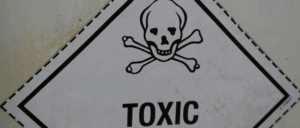As of early 2025, an estimated 66,000 to 70,000 American World War II veterans are still alive, according to the U.S. Department of Veterans Affairs and The National WWII Museum. To the brave men and women who answered the call of duty during the Second World War (September 1, 1939 – September 2, 1945), your service is a testament to the courage and sacrifice that shaped our world today.
The extraordinary demands of this global conflict, from the deafening intensity of battlefields across continents to the unforgiving extremes of climate on land and sea, left an enduring impact on the health of veterans.
This guide delves into the most prevalent service-connected health conditions among World War II veterans, based on the Veterans Benefits Administration’s Annual Benefits Report for Fiscal Year 2024.

Understanding the Importance of Documenting Service-Connected Health Conditions
Establishing a clear connection between your current health conditions and your military service is the foundation for accessing the healthcare and potential benefits you have rightfully earned. For World War II veterans, this process requires a thoughtful consideration of the specific circumstances of your military service and an understanding of the potential challenges in obtaining historical documentation from that era. It’s vital to remember that your personal recollections, corroborated by accounts from those who served alongside you (buddy statements), can serve as powerful forms of evidence, particularly when official records are limited or incomplete.
While a formal medical nexus, a professional medical opinion linking your current condition to your military service, is a significant piece of your medical documentation, providing your treating physician with a detailed personal history of your wartime service and a chronological account of your symptoms can significantly aid them in formulating a well-informed and supportive opinion.
The Most Prevalent Service-Connected Health Conditions Among World War II Veterans: An In-Depth Look (Based on VBA FY24 Data)

According to the Veterans Benefits Administration Annual Benefits Report for Fiscal Year 2024, the following are the most prevalent service-connected disabilities among World War II veterans receiving compensation:
Hearing Loss (26.4% of WWII SC Disabilities): Hearing loss, defined as a partial or complete inability to hear, is the most prevalent service-connected condition affecting World War II veterans, with 5,077 veterans receiving benefits for it. The intense noise exposure from artillery fire, naval bombardments, aircraft engines (especially on carriers and airfields), and small arms fire common during World War II significantly contributed to this widespread issue.
Establishing service connection often involves documenting your Military Occupational Specialty (MOS) or specific duties involving loud noise. Given that hearing protection was not standard during this era, buddy statements corroborating noise exposure are invaluable, especially when Service Treatment Records (STRs) lack comprehensive audiograms. Personal accounts detailing specific instances of noise exposure during your service are also important.
Long-term management includes regular hearing evaluations and the potential use of VA-provided hearing aids and assistive devices. Documenting the progression of your hearing loss over time through regular audiograms can also be helpful.
FAQ: I worked in the engine room of a ship during WWII. Will the VA automatically connect my hearing loss to my service?
While your work environment is strong evidence of potential noise exposure, you’ll still need a current diagnosis of hearing loss and a medical opinion linking it to your wartime service. However, your work history will be a significant factor in establishing that link.
Tinnitus (18.7% of WWII SC Disabilities): Tinnitus, the perception of sound when no external noise is present, affects 3,596 World War II veterans. It often manifests as ringing, buzzing, hissing, or clicking. The intense and prolonged noise exposure during the war is a significant potential cause of this condition.
Establishing service connection involves detailing the onset, characteristics, and severity of your tinnitus. Buddy statements that corroborate your complaints of tinnitus during or after service can be helpful. While not always documented in STRs, your personal account linking the onset or worsening of tinnitus to specific in-service events or noise exposure is crucial. An audiological evaluation can document the presence of tinnitus.
Management often involves strategies to cope with the symptoms, such as sound therapy or relaxation techniques. Documenting the impact of tinnitus on your daily life, sleep, and concentration is important for understanding its severity.
FAQ: I developed a constant ringing in my ears shortly after returning from the war. Can this be service-connected even if it wasn’t in my military records?
Yes, your personal account detailing the onset of tinnitus after a period of noise exposure during your WWII service, along with a medical opinion linking it to that service, can establish service connection.
Potential Psychological Impacts (4.2% of WWII SC Disabilities): While not formally diagnosed as PTSD during WWII, the enduring psychological effects of combat and traumatic experiences affected 799 World War II veterans. Symptoms could include flashbacks, nightmares, hypervigilance, and avoidance behaviors.
Establishing service connection involves providing a detailed account of the traumatic events experienced during your service and how your current psychological symptoms relate to those events. Buddy statements corroborating the stressful events or changes in your behavior after service can be valuable. While STRs may not have a formal PTSD diagnosis, records mentioning “shell shock” or “combat fatigue” can be relevant. A current psychological evaluation diagnosing PTSD and linking it to your wartime experiences is essential.
Long-term management often involves therapy, medication, or a combination of both, typically provided through VA mental health services. Documenting the impact of these psychological symptoms on your daily functioning and quality of life is important.
FAQ: I experienced intense combat during the war and have had nightmares and anxiety ever since. Can this be service-connected even though I never received treatment during the war?
Yes, if a mental health professional diagnoses you with PTSD and provides a medical opinion linking your current symptoms to specific traumatic events during your WWII service, it can be service-connected.
Residuals of Cold Injury (3.9% of WWII SC Disabilities): Affecting 749 World War II veterans, long-term health issues resulting from exposure to extreme cold during service, such as frostbite or trench foot, can include chronic pain, numbness, cold sensitivity, and skin changes.
Establishing service connection requires detailing the circumstances of your cold exposure during specific campaigns or assignments (e.g., Battle of the Bulge, North Atlantic). Service medical records documenting treatment for cold injuries are crucial. A current medical evaluation diagnosing the residuals of cold injury (e.g., peripheral neuropathy, chronic pain) and linking it to your wartime cold exposure is necessary.
Management focuses on alleviating symptoms and may include pain management, physical therapy, and protective measures against cold. Documenting the specific symptoms and their impact on your mobility and daily activities is important.
FAQ: I suffered frostbite in my feet during the war. Years later, I still have numbness and pain in my toes. Is this likely service-connected?
Yes, if a medical professional diagnoses your current foot problems as residuals of cold injury and provides an opinion linking it to your documented frostbite during your WWII service.
Scars, General (2.5% of WWII SC Disabilities): Scars resulting from wounds, injuries, or surgeries sustained during military service affect 478 World War II veterans. These can cause pain, itching, restricted movement, or emotional distress.
Establishing service connection involves documenting the injury or surgery that caused the scar through service medical records. Your personal account detailing how the injury occurred during your service is important. A current medical evaluation describing the scar, any associated symptoms (pain, itching, limited motion), and its impact on your function is necessary.
Management may include pain management, physical therapy, or dermatological treatment. Documenting any functional limitations or discomfort caused by the scar is important.
FAQ: I have a large scar on my arm from a shrapnel wound I received during the war. It still causes me pain. Is this service-connected?
Yes, if your service medical records document the shrapnel wound and a current medical evaluation describes the scar and confirms the pain is related to it.
Your Enduring Legacy: Documenting Your Health to Ensure Your Well-being

The extraordinary service and profound sacrifices made by the men and women of the World War II generation will forever be etched in the annals of history.
Remember, veterans deserve the support they’ve earned. If you want to learn more about medical evidence, contact our team of experts. Start your FREE Medical Evidence evaluation today or watch real testimonials and stories of our clients.











